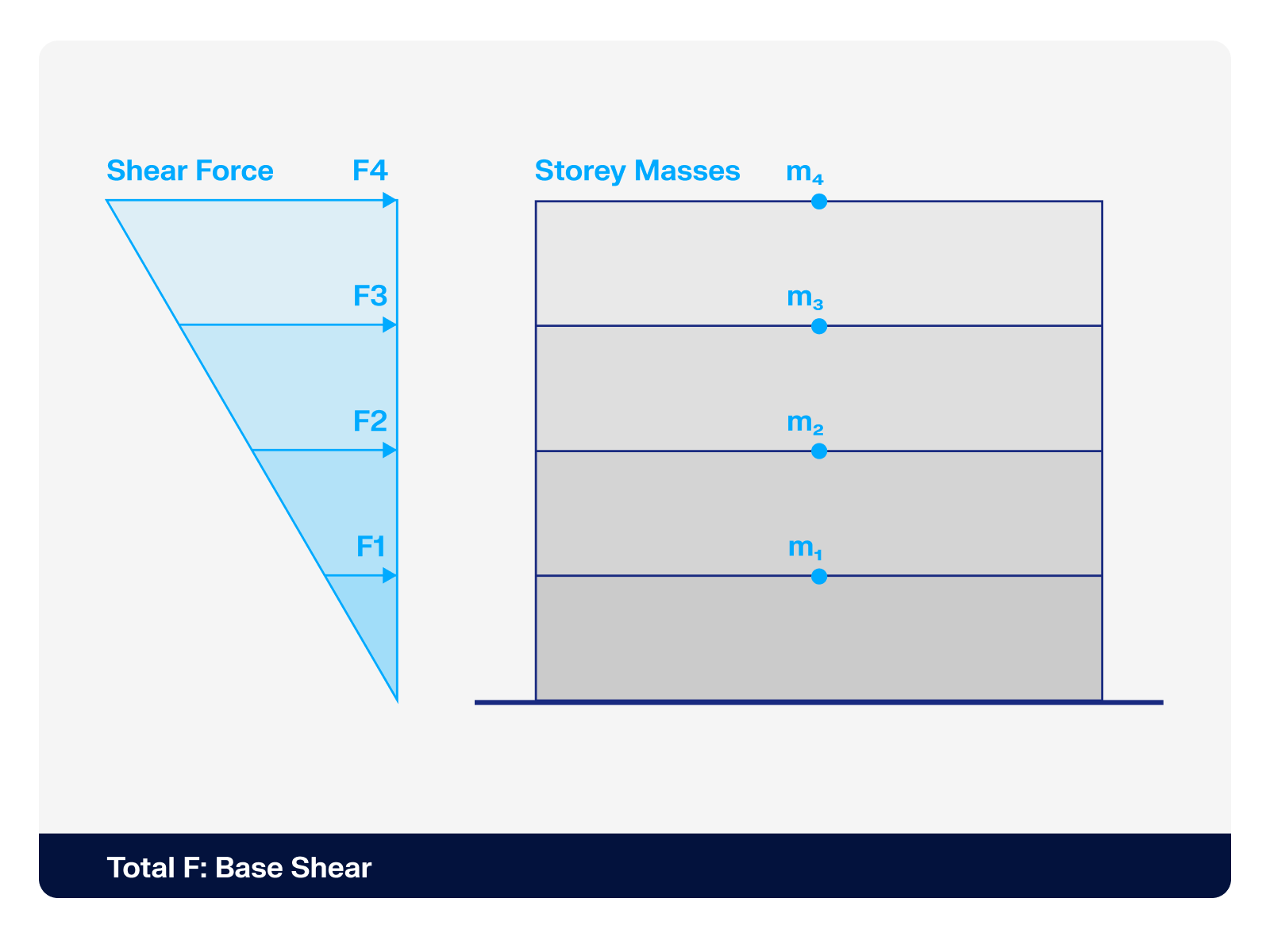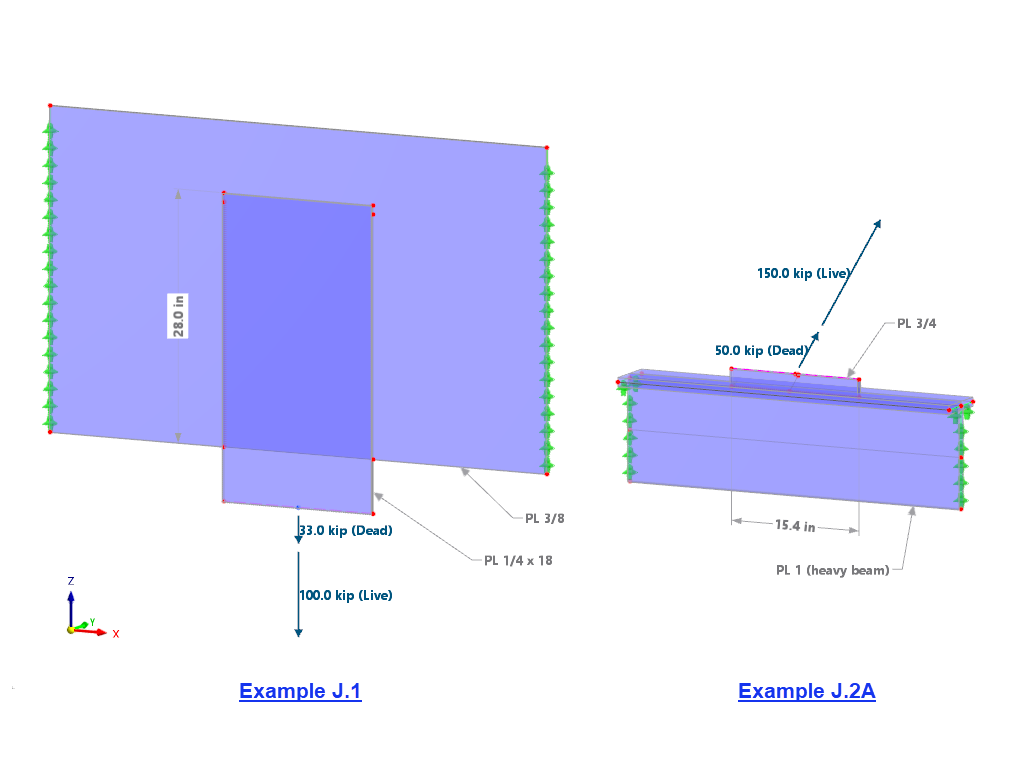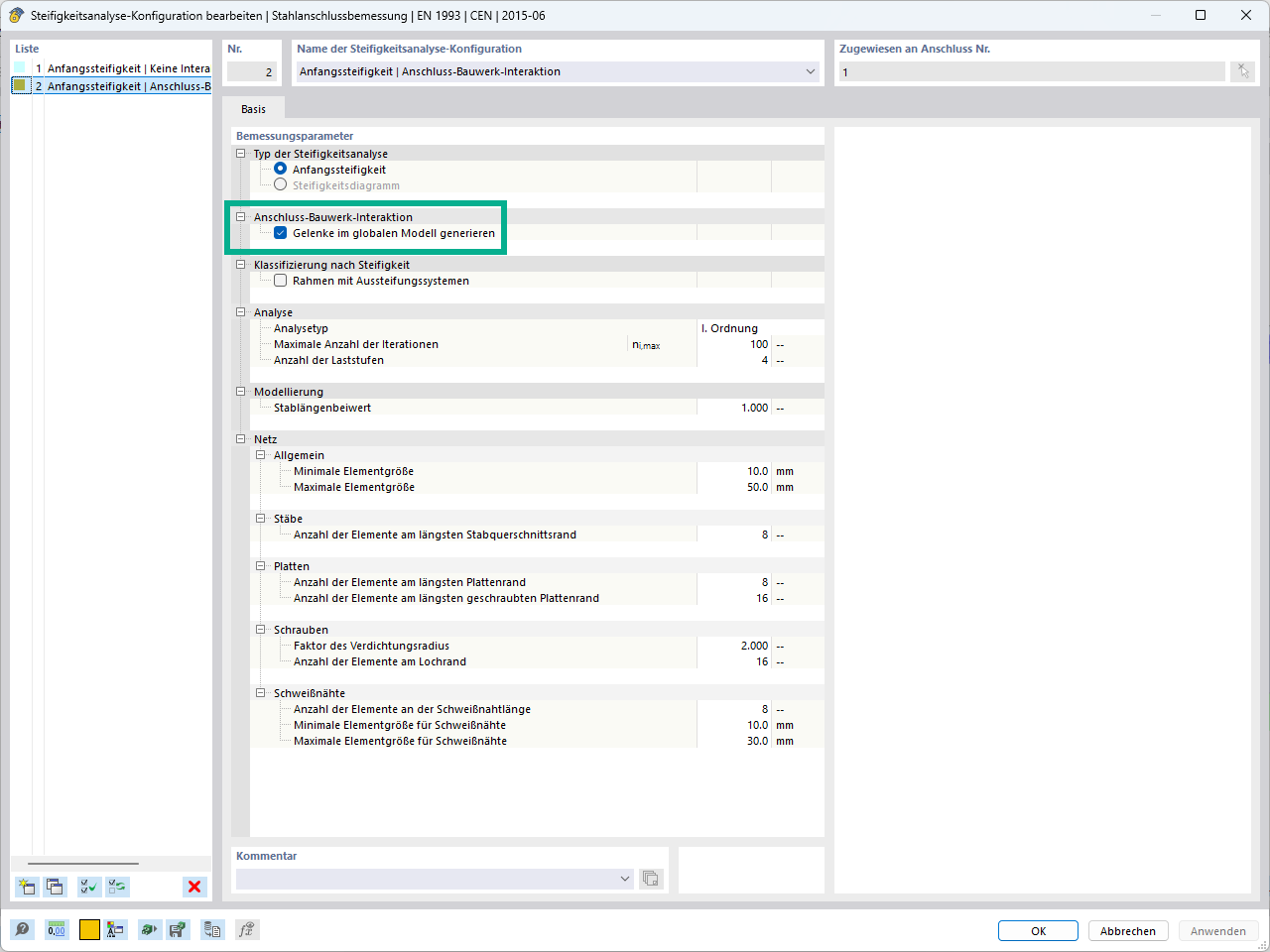Für Strukturen, die für das dynamische Berechnungsverfahren infrage kommen, gibt es in 4.1.8.12 [1] zwei weitere Untermethoden, die eine lineare dynamische Analyse beinhalten, entweder mit einem modalen Antwortspektrenverfahren oder mit Numerische Integration, lineare Zeitverlaufsmethode oder nichtlineare dynamische Analyse. This article will focus on a Modal Response Spectrum Method (RSA) and the further base shear requirements defined in NBC 2015.
NBC 2015 Varianten von Horizontalschub
Unter der Annahme, dass eine Antwortspektrenmethode (RSA) nach dem NBC berechnet wird, auf den hier nicht näher eingegangen wird, kann der Horizontalschub in der Gründungsebene im untersten Geschoss der Struktur in jeder der orthogonalen Richtungen ermittelt werden, in denen die seitliche Erdbebenlast aufgebracht wird. A series of steps in Article 4.1.8.12 [1] defines the various base shear variations needed to ultimately scale the story shears, story forces, member forces, and deflection if necessary.
Step 1)
In Sentence (5) [1], the elastic base shear, Ve, should be determined from a linear dynamic analysis, which is the first step in understanding the NBC base shear requirements. Ve sollte keine zusätzlichen Faktoren oder Skalierungen für das Antwortspektrum beinhalten.
Step 2)
Determine the design elastic base shear, Ved, also known as the "lateral earthquake design elastic force", according to Sentence (6) [1] using Ve determined from Sentence (5) [1]. For all structures located on sites other than Class F and having a seismic force-resisting system (SFRS) with a ductility-related force modification factor, Rd, equal to or greater than 1.5, then Ve should be multiplied by the larger of the following two factors:
|
S(0.2) |
Design spectral response acceleration for a period of T = 0.2 sec |
|
S(0.5) |
Design spectral response acceleration for a period of T = 0.5 sec |
|
S(Ta) |
Design spectral response acceleration for the fundamental lateral period of vibration of the structure in the direction under consideration |
Step 3)
The previously determined Ved should be multiplied by the importance factor, Ie, given in Article 4.1.8.5 [1] and divided by the ductility-related force modification factor multiplied by the overstrength-related force modification factor, RdRo, found in Table 4.1.8.9 [1] to determine the design base shear, Vd.
Step 4)
Determine the lateral earthquake design force, V, given in Article 4.1.8.11 [1] according to the simplified ESFP.
NBC 2015 Skalierungsanforderungen zum Horizontalschub
With the information above in collaboration with 4.1.8.12(8) [1], if Vd from Step 3 is less than 80% of V from Step 4, then Vd should be taken as 0.8V for all regular structures and irregular structures permitted to be designed with the ESFP.
For all irregular structures which require a dynamic analysis specified in 4.1.8.7 [1], as well as wood structures greater than 4 stories which meet the criteria set forth in 4.1.8.12(12) [1], then Vd shall be taken as the larger of Vd or V stated in 4.1.8.12(9) [1].
In addition to these minimums, the scale factor Vd/Ve should be applied to story shears, story forces, member forces, and deflections, including the effects of accidental torsion to determine the design values from 4.1.8.12(10) [1].
NBC 2015 Anwendung von Horizontalschub in RFEM
With the multiple variations for base shear discussed in NBC 2015, it may be difficult to determine which base shear variant is provided when running a response spectra analysis according to the standard in the structural analysis program RFEM.
Within the RF-DYNAM Pro – Equivalent Loads module, there are two spectrum types available after selecting NBC 2015, including the "Elastic response spectrum" and the "Design spectrum for linear calculation".
The "Elastic response spectrum" will provide the structure’s elastic base shear, Ve, from 4.1.8.12(5) [1] or Step 1 above. Dieser Wert schließt die Berücksichtigung von Ie/RdRo oder anderen Faktoren nicht ein.
The "Design spectrum for linear calculation" will provide the structure’s design base shear, Vd, from 4.1.8.12(7) [1] or Step 3 above. Es ist jedoch zu beachten, dass der in 4.1.8.12(6) bzw. Schritt 2 oben angegebene Zusatzbeiwert nicht in diese Berechnung einfließt. The calculation does include Ie/RdRo, as these variables are listed in the RF-DYNAM Pro – Equivalent Loads Code Parameters table, whereas they are not listed for the "Elastic response spectrum".
Für jeden Spektrumtyp kann der Anwender die Ersatzlasten skalieren, um die Anforderungen an den Skalierungsfaktor im Zusatzmodul zu berücksichtigen. So kann es zum Beispiel sein, dass das "Elastische Antwortspektrum", das zur Analyse der Strukturdurchbiegungen benötigt wird, da es die Einflüsse von Ie/RdRo nicht einschließt, mit Vd/Ve skaliert werden muss wie in 4.1.8.12(10) gefordert. For the "Design Spectrum for Linear Calculation" type, the Vd/Ve scale factor may also apply in addition to the factor specified in 4.1.8.12(6) or Step 2 above, which is not included in the calculation. RF-DYNAM Pro – Equivalent Loads provides a scaling option in each of global directions X, Y, and Z, in which the seismic force can be applied.
In summary, the linear dynamic analysis requirement and in particular the modal response spectrum analysis set forth by NBC 2015 are possible to consider utilizing the FEA program RFEM in addition to the RF-DYNAM Pro - Equivalent Loads add-on module. Die vielen Varianten von Horizontalschub in Artikel 4.1.8.12 können mit Hilfe des Programms entweder mit der Typbezeichnung des Spektrums oder unter Anwendung der Skalierungsfaktor-Eingabe im Zusatzmodul berechnet werden.



































.png?mw=512&hash=4a84cbc5b1eacf1afb4217e8e43c5cb50ed8d827)

















_1.jpg?mw=350&hash=ab2086621f4e50c8c8fb8f3c211a22bc246e0552)




-querkraft-hertha-hurnaus.jpg?mw=350&hash=3306957537863c7a7dc17160e2ced5806b35a7fb)


.png?mw=600&hash=49b6a289915d28aa461360f7308b092631b1446e)












